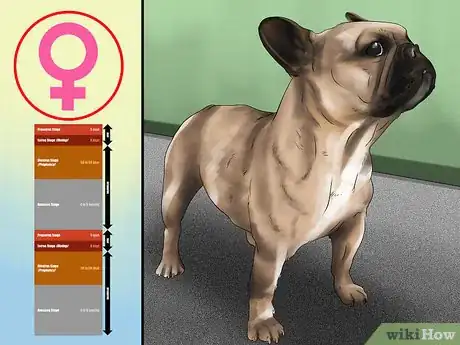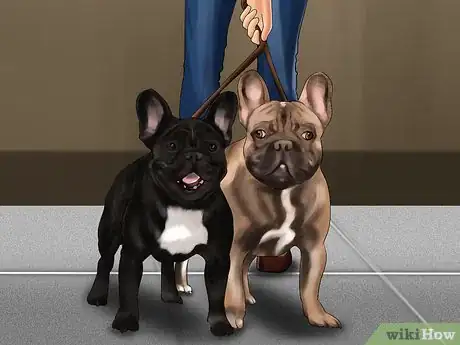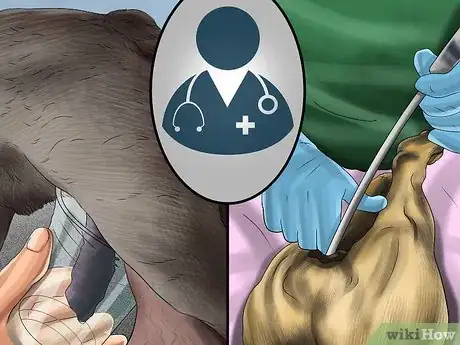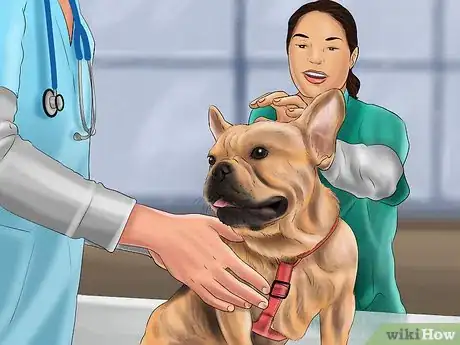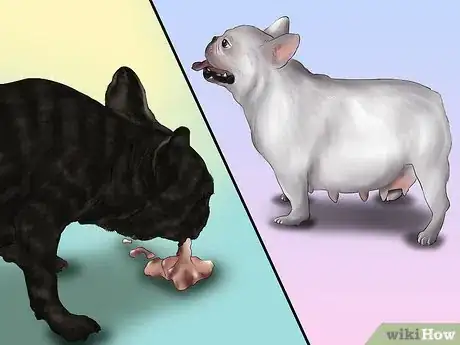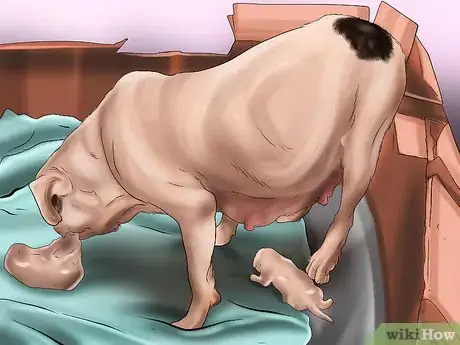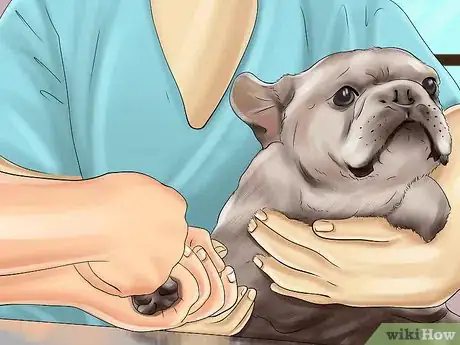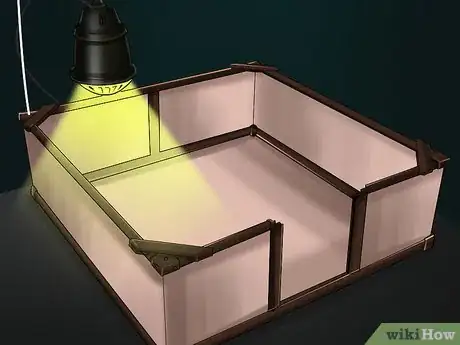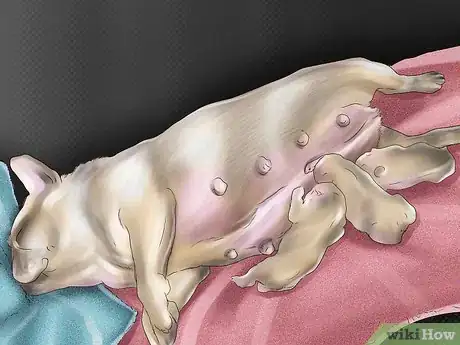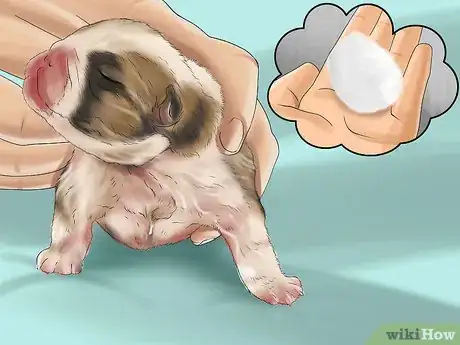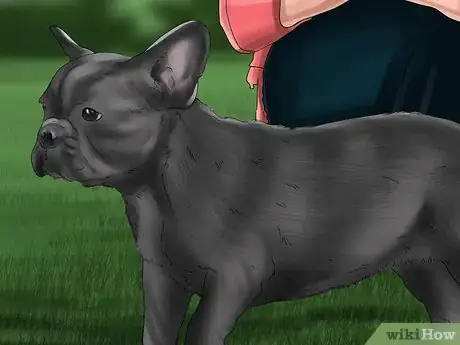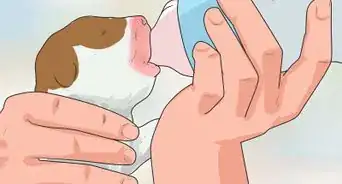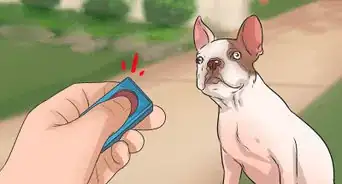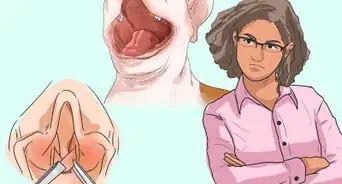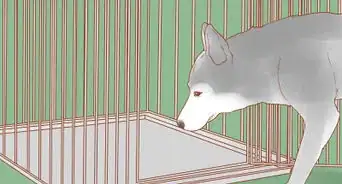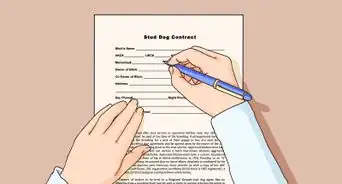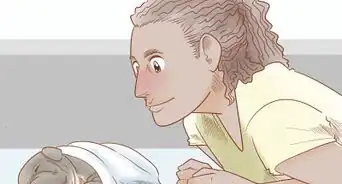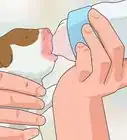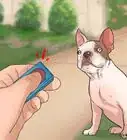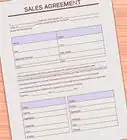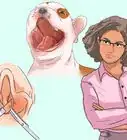This article was co-authored by Deanne Pawlisch, CVT, MA. Deanne Pawlisch is a Certified Veterinary Technician, who does corporate training for veterinary practices and has taught at the NAVTA-approved Veterinary Assistant Program at the Harper College in Illinois and in 2011 was elected to the board of the Veterinary Emergency and Critical Care Foundation. Deanne has been a Board Member of the Veterinary Emergency and Critical Care Foundation in San Antonio, Texas since 2011. She holds a BS in Anthropology from Loyola University and an MA in Anthropology from Northern Illinois University.
There are 8 references cited in this article, which can be found at the bottom of the page.
This article has been viewed 182,085 times.
French Bulldogs are adorable animals that make great family pets with their loving, friendly personalities. If you want to breed French Bulldogs, you need to tackle the task of becoming a breeder with great care and attention. Make sure you choose males and females with good health histories that are not closely related. Monitor the breeding encounter and watch out for signs of necessary C-section. Join some reputable breed organizations and start building up your credibility as a breeder.
Steps
Mating the Animals
-
1Choose dogs with good breeding histories. To breed French Bulldog puppies, you need to choose dogs that have a good health history, and who have characteristics you would like to pass onto puppies. Think about physical characteristics, like size and color, along with other qualities like temperament and personality.[1]
- Make sure the male and female dog aren't closely related.
- Have both dogs genetically tested and tested for infectious diseases like Brucellosis so you know they're healthy before you breed them.
-
2Track your bitch’s ovulation cycle. Typically, a bitch will start ovulating about 5 days into her cycle, once she has started spotting. You’ll notice a bit of blood and irritability to indicate the beginning of her fertile period.
- At this point, you can take your female to the vet for tests to confirm that she’s ovulating before you place her with the male for mating.
Advertisement -
3Put the dogs together when the bitch is ovulating. When you have confirmation that your bitch is ovulating, place her in the same room as your stud. It’s best to put one hand on the female’s collar and the other under her ribcage to help steady her while the male mounts her. Make sure to supervise the mating session closely to prevent any aggressive outbursts.
- If either dog shows signs of aggression, it’s best to keep them both on leashes during the mating session. That way you can pull them apart and control their interaction better to prevent injury.
- During intercourse, the stud’s penis will enlarge while it is inside the female. This leads to a situation in which the penis gets “stuck” inside the female and the male dog will typically turn around so that it appears the two dogs are stuck butt-to-butt. This is completely normal and typically lasts around 20 minutes.
-
4Get help from your vet for artificial insemination instead of physically breeding the dogs. You can request veterinarian assistance with artificially inseminating your bitch, rather than actually mating the two dogs. This method can be much easier on the female, so it is often the method of choice for veteran breeders.[2]
- If you’re comfortable doing it yourself, you can try collecting the semen from the stud’s distended penis and dripping it into the bitch’s vagina with a clean dropper. Keep the female on her back with her hips slightly elevated to help ensure conception.
- Don't try to perform this yourself unless you've been trained or you could hurt the dogs or cause an infection.
Birthing the Puppies
-
1Take your female dog to the vet for prenatal care before the birth. The vet will be able to do an ultrasound or radiograph to see how many puppies your dog is going to have. They'll also be able to check for any possible issues with the pregnancy and give you advice for birthing the puppies.
-
2Watch for signs of labor. When your female is ready to begin labor, it should be quite obvious by her behavior. Some common signs of labor include: restlessness, shivering, panting, loss of appetite, whining, and vomiting. Your dog may also retreat to a secluded area in preparation for delivery.[3]
- Once you start seeing these symptoms, the puppies will generally start arriving in 12-24 hours after the symptoms of labor start.
-
3Interfere in the birthing process only when necessary. Each puppy should come within 10-30 minutes of one another and the dam will usually bite off the umbilical cord, tear open the placental sac around each puppy, and begin licking the puppy vigorously to stimulate breathing and circulation. If your female is performing all of these activities on her own, leave her to it so she can bond with her puppies.[4]
- If the dam doesn’t seem to know what to do, then you will need to take action. First, gently tear open the placental sac so the puppy can breathe. Then, cut the umbilical cord and tie it off using thread. Clear away any fluid or mucus away from the puppy's mouth and nose. Then rub the puppy vigorously to help stimulate breathing and circulation.
-
4Be prepared for a necessary cesarean. French Bulldogs have small pelvises and large heads, so they usually cannot give birth naturally. Be aware of this fact and monitor your Frenchie for symptoms of a necessary C-section when she starts the labor process.[5]
- If the bitch is in labor for more than an hour, you should immediately take her to the vet for an emergency C-section.
Caring for the Puppies
-
1Set up a whelping box. This is a space where the mother can convalesce while she is recovering from delivery and take care of her puppies. The box needs to be big enough for the mother and all the puppies to lay down comfortably with tall enough walls to keep the puppies inside – about 32 in (81 cm) wide by 16 in (41 cm) deep by 12 in (30 cm) high.
- You should make sure there is a heat source nearby like a heating lamp to help keep the puppies warm during the first week or so.
-
2Make sure the puppies are eating enough. Newborn puppies need to eat about once every two hours. Observe the new puppies to make sure they are making their way to their mother’s nipples for feeding times. If they can’t find it, try to squeeze the nipple and lead the puppy to the drop of milk to encourage it to eat.[6]
- If the puppies are not suckling, or seem to be constantly hungry (yelping and crying all the time), you may need to supplement with bottle feeding a high quality newborn puppy formula like Esbilac.
-
3Monitor the puppies to make sure they are urinating and defecating. French Bulldogs are not born knowing how to pee and poop. They learn these skills by being licked by their mothers. This motion encourages the puppies to use the bathroom.[7]
- If the mother doesn’t seem to be licking the puppies, you may have to do it. Dab a cotton ball in warm water and gently rub it across the puppy’s genitals to stimulate their excrement.
Becoming a Certified Breeder
-
1Obtain a breedable female. The most important thing you need to become a reputable breeder is a healthy, fertile female. You can always make arrangements with other breeders to use their males as studs, so you really just need a female to get started. Make sure your female is healthy and capable of carrying litters.[8]
- Take your female to the vet to get a full physical examination before you start breeding her.
- Your female dog should be up-to-date on all its vaccinations, actively taking heartworm medicine, and free of any parasites.
-
2Join several French Bulldog breed clubs. Joining such organizations will increase your chance of being approved when you apply to be a certified breeder through the Kennel Club, or another organization. It will also help you network with other Frenchie breeders – this way you can find other studs and bitches to breed your own dogs with down the road.[9]
- Consider joining the French Bulldog Club of America, the French Bulldog Club of England, the Southern Bulldog Club, or any others in your area.
-
3Apply to be an Assured Breeder, recognized by various dog organizations. You can apply for the Kennel Club’s Assured Breeder Scheme online at https://www.thekennelclub.org.uk/breeding/assured-breeder-scheme/assured-breeder-scheme-application/. When you complete the application process, you’ll need to include information about your animals (including registration names and numbers), your personal history breeding French Bulldogs, any relevant club memberships, and pay a small fee (typically around $60 US) for membership fees.
- Getting approved for this type of program will give you club access to advertise your litters in their publications and be listed as an approved breeder.
References
- ↑ http://frenchbulldogsmatter.blogspot.fr/p/breeding-your-frenchie.html
- ↑ https://janedogs.com/assisting-the-mating/
- ↑ https://ckcusa.com/blog/2016/september/the-signs-of-labor-in-dogs/
- ↑ https://ckcusa.com/blog/2016/september/the-signs-of-labor-in-dogs/
- ↑ http://www.amcny.org/blog/2016/01/27/dangerous-delivery-signs-your-birthing-dog-needs-a-veterinarian
- ↑ https://pets.thenest.com/tell-newborn-puppies-getting-milk-11374.html
- ↑ http://dogcare.dailypuppy.com/should-newborn-puppies-defecate-2865.html
- ↑ https://www.cuteness.com/article/french-bulldog-breeding-information
- ↑ http://www.bulldoginformation.com/french-bulldog-clubs.html
About This Article
To breed French Bulldogs, start by selecting a male and female dog with characteristics you want to pass on to the puppies. Then, take them to the vet to ensure they're healthy enough to breed. Next, watch for the female to bleed, which is a sign of ovulation, before bringing the dogs together. You should also hold on to the female's collar with one hand and support her ribcage with the other while the male mounts her. Additionally, have both dogs on leashes so you can separate them if one dog gets aggressive. For tips on how to become a certified French Bulldog breeder, keep reading!

